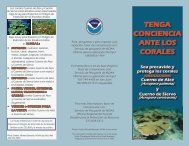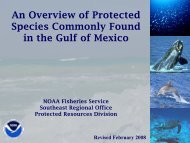NOAA Technical Memorandum NMFS-SEFSC-xxx
NOAA Technical Memorandum NMFS-SEFSC-xxx
NOAA Technical Memorandum NMFS-SEFSC-xxx
Create successful ePaper yourself
Turn your PDF publications into a flip-book with our unique Google optimized e-Paper software.
structure (B) and reserve status (C) of the sites (n=3 sites).Figure 7. Size-frequency distribution of snails resident on A. palmata low density (LD)and thicket stands, and Montastraea spp. colonies from all sites censused between 1998and 2001. Median (◊) length and inter-quartile range (├─┤) shown on figure along withtotal number of snails measured.Figure 8. Square-root transformed length of snails (least squares mean ± 95% confidenceinterval) found resident on different host corals (low density (LD) and thicket A. palmatastands, and Montastraea spp.) from all sites censused between 1998 and 2001.Figure 9. Size-frequency distributions of snail populations by year and host. Number ofsnails measured shown on figure. Note different scales on the y-axes.Figure 10. Two-way interaction between the effects of year and host (pooled all sites) onthe length (square root-transformed) of snails (least squares mean ± 95% confidenceinterval). See Table 2 for significance levels and Figure 9 for number of snails measured.Figure 11. Three-way interaction (Table 2) between the effects of year, host and reserveon the length of snails (square-root transformed).Figure 12. Two way interaction between the effects of site and host (pooled years) on thelength (square root transformed) of snails (least squares mean ± 95% confidenceinterval). Circled sites are those located within no-take reserves. See Table 3 forsignificance levels and Figure 14 for number of snails measured.Figure 13. Size-frequency distributions of snail populations by host and site (pooledyears 1998 through 2001). Number of snails measured shown on figure.12


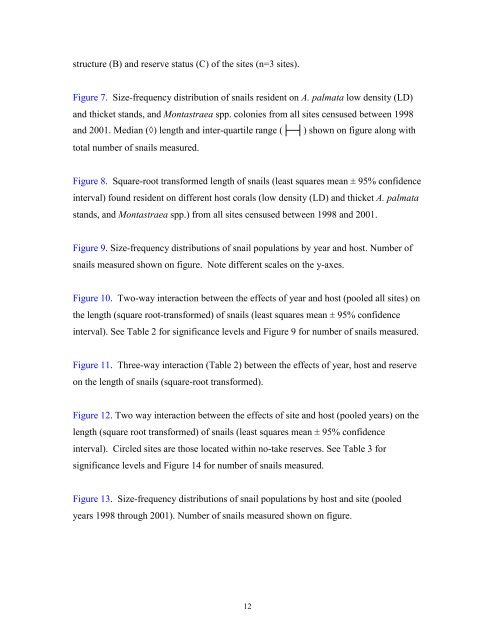
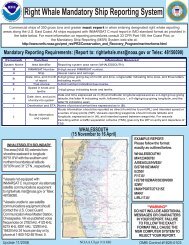

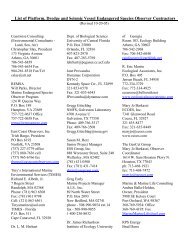
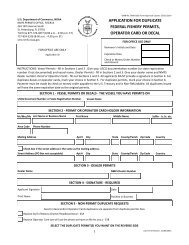
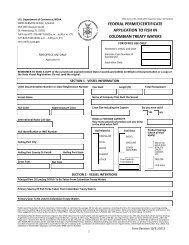
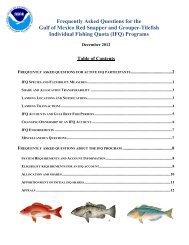
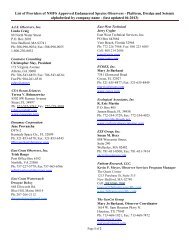
![Right Whale Fact Sheet [PDF] - Southeast Regional Office - NOAA](https://img.yumpu.com/28432664/1/190x245/right-whale-fact-sheet-pdf-southeast-regional-office-noaa.jpg?quality=85)

